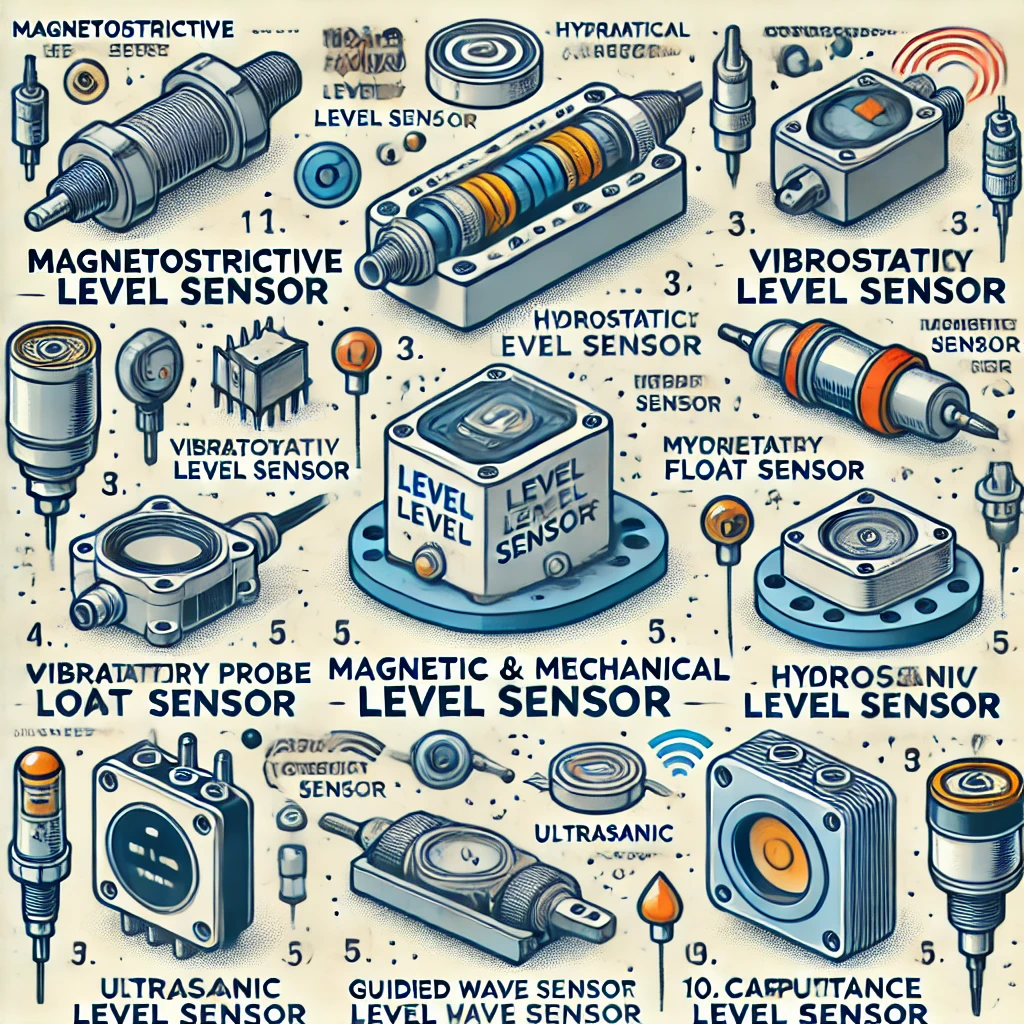The level sensor market is experiencing significant growth due to the increasing need for precise liquid and solid level measurements across industries. Level sensors, which detect and monitor the level of liquids, solids, or granular materials, play an essential role in automating industrial processes, ensuring operational safety, and optimizing resource management. They are widely adopted in industries such as oil & gas, automotive, pharmaceuticals, food & beverage, and water treatment. Advancements in sensing technology, including non-contact sensors and smart, IoT-enabled devices, are driving market expansion.
The global level sensors market size is projected to reach USD 7.64 billion in 2029 from USD 5.56 billion in 2024, with a CAGR of 6.5%.
Importance of Level Sensors in Various Industries
Level sensors are vital across multiple industries. In water treatment plants, they help monitor water levels to avoid overflow and ensure efficient resource management. In the chemical and oil & gas sectors, these sensors are critical for safety, preventing leaks and ensuring proper storage. The food & beverage industry also relies on level sensors for monitoring ingredients during production processes. The automotive industry uses them to monitor fluid levels in vehicles, enhancing performance and safety. In short, level sensors are indispensable in ensuring smooth and safe operations in modern industrial settings.
Current Trends in the Level Sensor Market
- Miniaturization and Smart Sensors: The trend towards smaller, more compact level sensors is increasing as manufacturers look for sensors that can be integrated into confined spaces. Additionally, smart, IoT-enabled sensors are becoming more prevalent, offering real-time data monitoring, predictive maintenance, and better control over industrial processes.
- Non-Contact Sensing Technologies: Non-contact sensors, which rely on technologies such as ultrasonic, radar, and capacitive sensing, are gaining popularity for their accuracy, reliability, and ability to work in harsh environments. These sensors are widely used in industries like oil & gas and water management.
Download PDF Brochure @ https://www.marketsandmarkets.com/pdfdownloadNew.asp?id=926

Market Drivers and Restraints
Drivers:
- Industrial Automation: The rise of Industry 4.0 and the growing need for automated solutions across industries are propelling the demand for level sensors.
- Safety Regulations: Increasing regulatory emphasis on safety standards, especially in industries like oil & gas and chemicals, is driving the adoption of accurate and reliable level sensors.
- IoT Integration: The integration of IoT-enabled sensors that offer real-time monitoring, data analytics, and predictive maintenance capabilities is a significant driver of market growth.
Restraints:
- High Initial Costs: Advanced level sensor technologies, such as radar and ultrasonic sensors, can be expensive to implement, limiting adoption in smaller businesses.
- Complexity of Integration: Integrating level sensors into existing systems, especially in traditional industries, can be challenging and may require significant infrastructure upgrades.
Level Sensors in Oil & Gas Industry
In the oil & gas sector, level sensors are essential for monitoring and controlling the levels of liquids and gases in storage tanks, pipelines, and refineries. The industry’s reliance on hazardous chemicals and flammable materials makes accurate level monitoring crucial for safety. Non-contact sensors, such as radar and ultrasonic sensors, are widely used in this sector due to their ability to operate in extreme environments, offering precise measurements without the risk of contamination.
Automotive Applications of Level Sensors
The automotive industry relies heavily on level sensors for monitoring critical fluid levels, such as fuel, coolant, and brake fluid, ensuring vehicles operate safely and efficiently. With the rise of electric vehicles (EVs), level sensors are also being used to monitor the electrolyte levels in EV batteries, contributing to enhanced battery performance and longevity. The increasing demand for advanced driver assistance systems (ADAS) and autonomous vehicles is also driving the need for accurate and reliable level sensors in modern automotive systems.
Future Outlook for Level Sensors
The level sensor industry is expected to grow significantly in the coming years, with advancements in sensing technologies and the increasing adoption of IoT and Industry 4.0 solutions driving demand. The expansion of industries such as oil & gas, automotive, and water management, particularly in emerging economies, will contribute to market growth. Innovations in non-contact sensor technologies, miniaturization, and smart sensors will play a crucial role in shaping the future of the level sensor industry. Additionally, the growing focus on sustainability and resource optimization will drive demand for sensors that enable efficient use of resources like water and energy.
Major companies operating in the level sensors companies include
- ABB (Switzerland),
- Emerson Electric Co. (US),
- Inc. (US),
- Siemens (Germany),
- Honeywell International Inc. (US).
In conclusion, the level sensor market is on a strong growth trajectory, with technological advancements, increasing industrial automation, and the rise of smart infrastructure driving demand across various sectors. Despite challenges like high costs and complexity of integration, the future outlook for the level sensor industry remains promising, with significant opportunities in key markets such as oil & gas, automotive, and water management.
FAQ on Level Sensor Market
- What are level sensors?
Level sensors are devices used to detect and monitor the level of liquids, solids, or granular materials in various applications. They provide accurate measurements to ensure efficient process management and safety in industries. - What industries use level sensors?
Level sensors are utilized in multiple sectors, including oil & gas, automotive, food & beverage, pharmaceuticals, water treatment, and chemical processing. - What are the current trends in the level sensor market?
Current trends include the adoption of smart, IoT-enabled sensors, non-contact sensing technologies (such as ultrasonic and radar), and miniaturization of sensor designs. - What factors are driving the growth of the level sensor market?
Key drivers include increasing industrial automation, stringent safety regulations, and the integration of IoT technologies that enhance monitoring and data analytics. - What challenges does the level sensor market face?
Challenges include high initial costs of advanced sensor technologies and the complexity of integrating these sensors into existing industrial systems.
